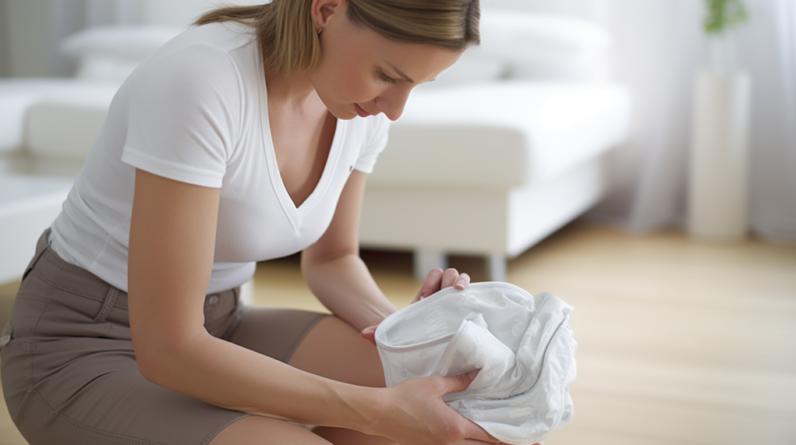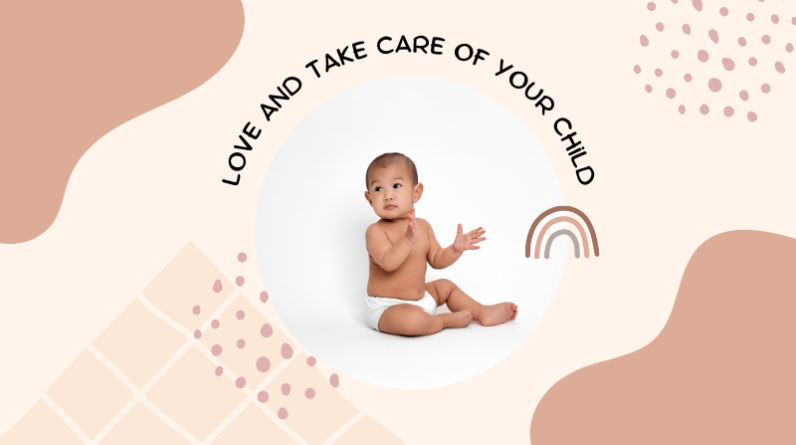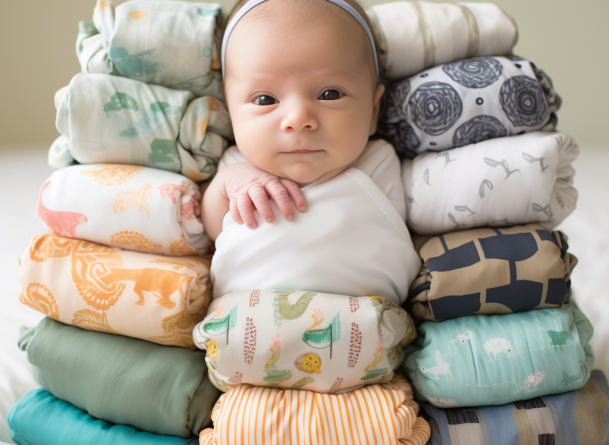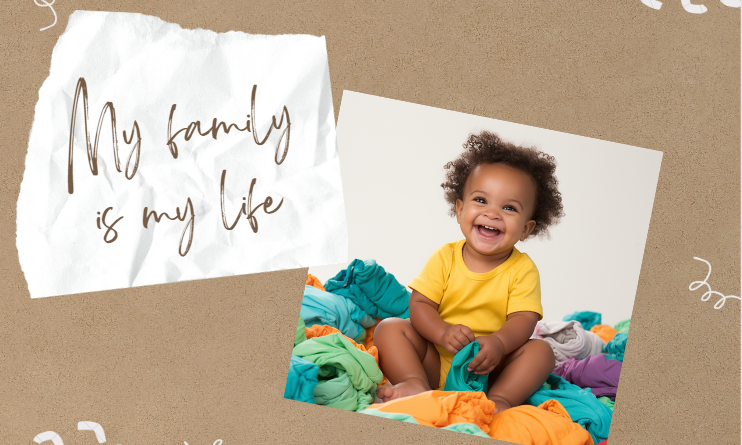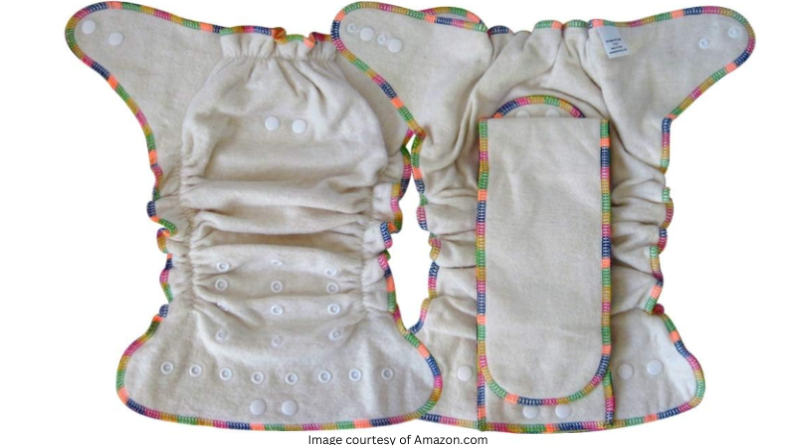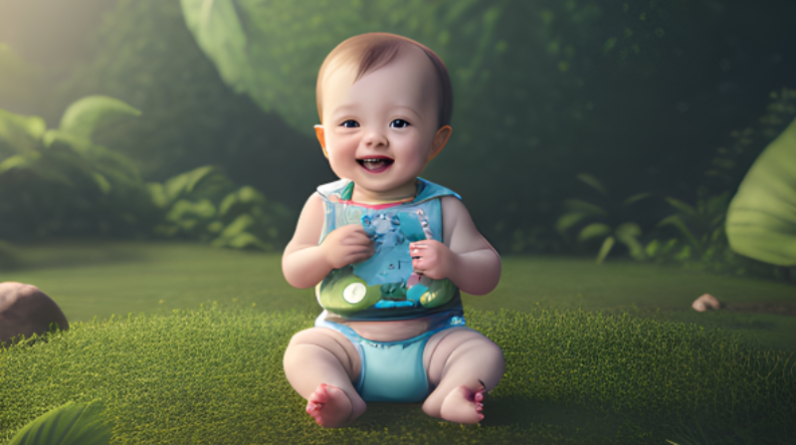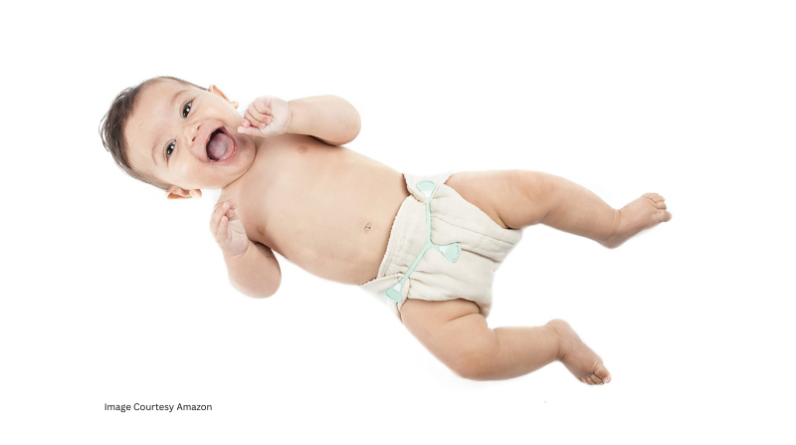
When it comes to cloth diapering, prefold diapers have gained immense popularity among parents around the world. These versatile and cost-effective diapering options offer excellent absorbency, durability, and ease of use. In this article, we will explore the world of prefold cotton diapers, discussing their different types, popular brands, features, folding techniques, diaper covers for waterproofing, tips on how to care for them, how to troubleshoot common problems, and a comprehensive FAQ section to address your queries.
What are Prefold Cloth Diapers?
Prefold cloth diapers are a type of reusable diaper that consists of multiple layers of fabric sewn together. They are rectangular in shape and have a thicker, absorbent middle section. The prefold diaper gets its name from the pre-folded design that makes it convenient for parents to use.
Why are Prefold Diapers a Popular Choice for Cloth Diapering?
Prefold diapers have gained popularity for several reasons:
- Affordability: Prefold diapers are an economical choice for cloth diapering. They are typically more affordable than all-in-one or pocket diapers.
- Versatility: Prefolds can be used with a variety of diaper covers, providing flexibility and customization options for parents.
- Durability: These diapers are made from high-quality materials and can withstand multiple washes, making them a durable choice that can be used for multiple children.
- Ease of Use: Prefolds are easy to fold, fasten, and clean, making them suitable for both experienced and novice cloth diaper users.
Different Types of Prefold Diapers
Here are some popular types of prefold diapers:
These are just a few of the many brands of prefold cloth diapers available on Amazon.com. When choosing a brand, consider factors such as material, size options, absorbency, and customer reviews to find the best fit for your baby’s needs.
Features and Benefits of Prefold Diapers
Prefold diapers come with a range of features and benefits that make them a preferred choice for many parents:
- Highly Absorbent: The multiple layers of fabric in prefold diapers provide exceptional absorbency, ensuring your baby stays dry for longer periods.
- Durable: Prefold diapers are designed to withstand frequent washing and drying without losing their shape or absorbency. They are built to last through multiple children.
- Affordable: Compared to other types of cloth diapers, prefolds are often more budget-friendly, making them an accessible option for many families.
- Easy to Find: Prefold diapers are widely available in stores and online, making it convenient for parents to purchase and restock.
- Compatible with Various Diaper Covers: Prefolds can be paired with different types of diaper covers, including PUL covers, wool covers, and fleece covers, offering flexibility and customization options.
Different Fabric Options
Prefold diapers come in different fabric options to suit various preferences:
- Cotton: Cotton prefolds are a popular choice due to their softness, absorbency, and ease of maintenance. They are ideal for daily use and can withstand frequent washing without losing their effectiveness.
- Bamboo: Bamboo prefolds are known for their luxurious softness and high absorbency. They are hypoallergenic and eco-friendly, making them an excellent choice for babies with sensitive skin.
- Hemp: Hemp prefolds are highly absorbent and naturally antimicrobial, making them an excellent option for heavy wetters. They are durable and become more absorbent with each wash.
Folding Techniques and Diaper Fasteners
Prefold diapers offer several folding techniques and fastening options to ensure a secure fit:
- Traditional Fold: This fold involves folding the diaper into thirds, with the thickest absorbent portion in the middle. It is secured in place with a diaper cover.
- Pad Fold: The pad fold technique involves folding the diaper into a rectangular shape without any intricate folding. This method is quick and easy, suitable for parents on the go.
- Snappi: Snappi is a popular diaper fastener that holds the prefold in place, providing a snug fit without the need for pins. It offers convenience and security.
- Pins: Traditional diaper pins can be used to secure prefold diapers, ensuring a secure fit. This method requires practice and caution to avoid injury.
Pairing Prefolds with Diaper Covers for Waterproofing
To ensure leak-proof protection, prefold diapers can be paired with various types of diaper covers:
- PUL Covers: PUL (polyurethane laminate) covers are waterproof and breathable. They provide a reliable barrier against leaks and are available in different styles and designs.
- Wool Covers: Wool covers are naturally breathable and offer excellent moisture regulation. They are highly effective in preventing leaks and can be used both day and night.
- Fleece Covers: Fleece covers are soft, water-resistant, and breathable. They provide a snug fit and help keep your baby dry, making them suitable for both daytime and nighttime use.
Tips on How to Care for Prefold Diapers
Proper care is essential to maintain the quality and longevity of prefold diapers. Here are some tips to help you care for them:
- Prepping: Before using new prefold diapers, it is recommended to wash them multiple times to enhance their absorbency. Follow the manufacturer’s instructions for prepping.
- Washing Routine: Wash soiled prefolds in a washing machine using a gentle, fragrance-free detergent. Avoid using fabric softeners or bleach, as they can affect absorbency. Rinse thoroughly to remove any detergent residue.
- Drying: Prefold diapers can be line-dried or tumble-dried on low heat. Avoid high heat, as it can damage the fabric. Sun drying is a natural way to remove stains and maintain freshness.
- Stain Removal: For stubborn stains, consider using natural stain removers, such as a mixture of vinegar and water or a mild detergent. Apply the solution directly to the stain, let it sit for a while, and then wash as usual.
- Storage: Store clean and dry prefolds in a well-ventilated area. Avoid storing them in plastic bags or airtight containers, as this can lead to odor or mildew issues.
Troubleshooting Common Problems
Despite their durability and functionality, prefold diapers may encounter some common issues. Here are a few troubleshooting tips:
- Leakage: Ensure proper fit by adjusting the folds and fasteners. Check that the diaper cover is snug but not too tight. If leakage persists, consider adding an extra absorbent layer or changing the diaper more frequently.
- Odor Build-up: Wash prefolds thoroughly to remove any bacteria or residue that may cause odor. Consider using a diaper-friendly odor-neutralizing agent during the wash cycle.
- Rash or Irritation: If your baby experiences a rash or irritation, check the diaper fit, and consider using a diaper liner for added protection. Use a diaper cream or ointment recommended for cloth diapers.
Remember, every baby is unique, and what works for one may not work for another. If you encounter persistent issues, seek advice from experienced cloth diapering parents or consult with a cloth diapering support group.
FAQ (Frequently Asked Questions)
- How many prefold diapers do I need? The number of prefold diapers you need depends on the age of your baby and how frequently you plan to do laundry. As a general guideline, having 24 to 36 prefold diapers in your stash is a good starting point.
- How do I choose the right size of prefold diapers? Prefold diapers are available in different sizes, typically based on the weight range of your baby. Consider your baby’s weight and age when selecting the size. You can also choose adjustable prefolds that can be folded to fit different sizes.
- Can I use prefold diapers overnight? Prefold diapers can be used overnight by adding extra absorbency, such as doublers or inserts. Pair them with a highly absorbent diaper cover to minimize the risk of leaks.
- Are prefold diapers suitable for newborns? Prefold diapers can be used for newborns, but it’s essential to choose the right size or opt for newborn-specific prefolds. Newborn-sized prefolds offer a better fit for smaller babies.
- How often should I change prefold diapers? It is recommended to change prefold diapers every 2 to 3 hours or as soon as they become soiled or wet to prevent diaper rash and maintain hygiene.
- Can prefold diapers be used with diaper sprayers? Yes, prefold diapers can be used with diaper sprayers for easier and hygienic clean-up. Ensure that you remove any solid waste before washing the diapers.
- Are prefold diapers bulky on babies? Prefold diapers may appear bulkier than disposable diapers, but they provide excellent absorbency and containment. The bulkiness can vary depending on the fold and the diaper cover used.
- Can I use prefold diapers for swimming? Prefold diapers are not designed for swimming as they are not waterproof. However, you can use swim diapers specifically designed for swimming activities.
- Can I use fabric softeners on prefold diapers? It is advisable to avoid fabric softeners as they can reduce the absorbency of prefold diapers. Instead, opt for natural alternatives like vinegar or dryer balls to soften the fabric.
- Are prefold diapers suitable for daycare or childcare centers? Many daycare or childcare centers accept prefold diapers. Check with the facility beforehand and provide them with any specific instructions they may need for using prefold diapers.
Conclusion
Prefold cotton diapers offer a practical and reliable choice for cloth diapering. With their excellent absorbency, durability, affordability, and versatility, they have become a go-to option for many parents. By choosing the right prefold diapers, mastering folding techniques, and pairing them with suitable diaper covers, you can provide your baby with a comfortable and eco-friendly diapering experience. Proper care and troubleshooting techniques will help ensure the longevity and effectiveness of your prefold diapers. Embrace the convenience and benefits of prefold cloth diapers for a sustainable and cost-effective diapering journey.
Please note that this article serves as a general guide. It is important to follow manufacturer instructions and consult relevant resources for detailed information on caring for prefold diapers and addressing common concerns.


